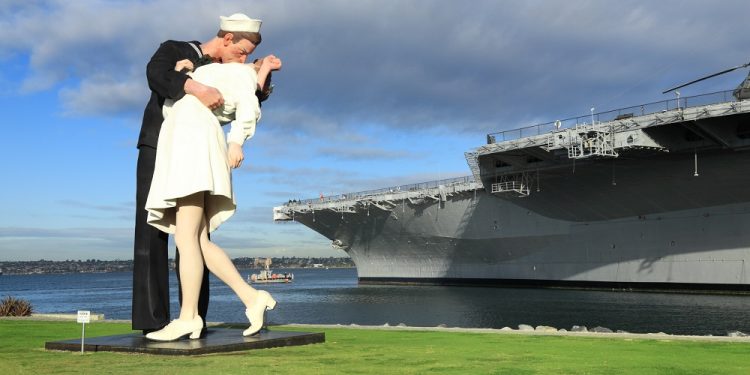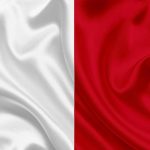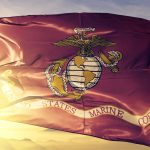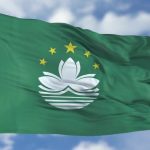
VJ Day
VJ Day, also known as Victory Over Japan Day, is observed on September 2 every year in the United States. It commemorates the official surrender ceremony of the Japanese aboard the USS Missouri in Tokyo Bay—an event that occurred on September 2, 1945. However, this holiday is celebrated on this day only in the U.S.
Other Allied countries celebrate it on different days. In Australia, Canada, the Netherlands, New Zealand, North Korea, South Korea, and the UK, this holiday is observed on August 15th. In China, Hong Kong, Macau, the Philippines, and Taiwan, it’s observed on September 3rd.
The History Of VJ Day
Before anyone can talk about VJ Day, you first have to go back to Japan’s surprise aerial attack on the United States naval base at Pearl Harbor on Oahu, Hawaii, on December 7, 1941. This attack compelled the U.S. to enter WWII in more than just an advisory or support position.
The attack resulted in the U.S. gearing up its war machine and entering the war as an official combatant. This would be the start of an expensive, bloody campaign against the Japanese empire. Why did the Japanese attack Pearl Harbor?
It was a plan created by Admiral Isoroku Yamamoto, an officer who was once a student at Harvard University in the U.S., and who had honorably served as Japan’s naval attaché to Washington, D.C. From his experience, he knew that Japan couldn’t win a protracted war against the U.S.
The U.S. simply had more resources than Japan and had the men, resources, and money for the war. So Yamamoto decided that the only chance Japan had was to strike the first blow. An attack so devastating that it would knock U.S. naval forces out of the fight for a year, maybe more.
With that as the ultimate goal, Japanese aerial forces trained for an entire year for the attack. While pilots were being trained for the mission, the Japanese also took the time to make specific changes to the equipment they were going to require for the mission.
This included modifying planes and torpedoes so that they would work on short runs over the average depth of 45 feet of water in Pearl Harbor’s Bay. At first, the Japanese Foreign Ministry wanted to make a declaration of war and present it to the U.S. so that they didn’t violate international laws.
However, this move was blocked by the Japanese military, who felt that this would jeopardize their plan. As a result, a declaration of war wasn’t declared before the attack. The Japanese then assembled one of the most powerful carrier task forces ever assembled in history.
It used all six of Japan’s aircraft carriers: Akagi, Kaga, Hiryu, Shokaku, Soryu, and Zuikaku. It also included 420 embarked planes. This force would be placed under the command of Vice-Admiral Chuichi Nagumo.
He added to the Pearl Harbor striking force large submarines, midget submarines, fuel tankers, cruisers, destroyers, and fast battleships. He launched this force on November 26, 1941, with orders that he would abort the mission if the operation was discovered.
Undiscovered, this force was less than 300 miles north of Pearl Harbor right before dawn on December 7th. The first wave of 180 planes, including a mix of high-level bombers, torpedo planes, dive bombers, and fighters, launched to the south. After that first wave took off, a second wave was sent out.
At the same time, midget subs detached from their carrier subs and were attempting to navigate their way into the narrow entrance channel of Pearl Harbor. The Japanese attack on Pearl Harbor took approximately 2 hours, and as devastating as it was, it didn’t inflict as much damage as the Japanese had hoped.
According to U.S. Navy Commander Alan D. Zimm, this may be due to the fact that Japanese Captain Mitsuo Fuchida fired two flares. The two flares were a decided-upon signal that was supposed to be fired if Japanese forces didn’t catch Pearl Harbor by surprise. As a result, Japanese forces used more cautious tactics than they otherwise would have used.
Of course, mitigating circumstances aren’t the only reason that the Japanese didn’t do as much damage to Pearl Harbor as they wanted to. American forces fought back extremely aggressively. U.S. service members fired over 280,000 rounds of ammunition at Japanese forces.
In the end, the attack killed over 2,400 service members and wounded over 1,178 more. Japanese forces also sank six U.S. ships and destroyed 169 U.S. Navy and Army Air Corps planes. Japan’s attack failed to disarm the United States fleet, however. There were no U.S. aircraft carriers at Pearl Harbor.
Japanese forces were also unable to knock out vital infrastructure such as fuel tanks. The attack also helped to strengthen the U.S. resolve and draw them into the war—something that the Japanese didn’t want to happen in the first place.
All throughout the winter and into the spring of 1942, the U.S. received devastating news about the Japanese Empire that was being extended out into the Pacific. The Japanese had erected a defensive empire that reached out from the Solomon Islands to western Alaska. This allowed the Japanese to threaten U.S. supply lines to Australia.
Since the U.S. had plans to use Australia as a staging ground for further offensive action in the region, this ended up being a terrible blow to the Allied cause. Over the next several months, the tides of the war began to change, and Allied forces began to make headway. First, they were able to hold back Japan’s advance, and then they were able to counterattack.
As the U.S. dislodged Japanese forces from tiny Pacific islands to the jungles of the Philippines and New Guinea, the U.S. gained valuable access to strategic locations that could be used for supply bases and airfields. The war would continue over the next few years until the German forces unconditionally surrendered on May 7, 1945, in the West.
This resulted in Allied forces celebrating V-E Day (or Victory in Europe Day) on May 8, 1945. The following day, on May 9, 1945, German forces in the east surrendered. With the war in Europe ending, Allied forces were able to focus their full resources on the war in the Pacific. On June 22, 1945, Okinawa fell to U.S. forces, and an invasion of the Japanese home islands was being drafted.
However, with the invention of the atomic bomb and its use first over Hiroshima on August 6 and then over Nagasaki on August 9th, the need for a direct invasion of the Japanese islands wouldn’t be necessary. The Japanese government accepted Allied terms of surrender on August 14, 1945.
The following day, on August 15, the UK had its first official V-J Day. Although holiday celebrations erupted on August 14th and 15th, and over many consecutive days, V-J Day wouldn’t be celebrated as a holiday until September 2, 1945. This is when the formal surrender documents were signed aboard the USS Missouri in Tokyo Bay.
Facts About World War II
As we researched V-J Day, we came across some interesting facts about World War II. Facts that we’d like to share with everyone reading this holiday today. Keeping the following facts in mind will give everyone a better appreciation of what U.S. and Allied service members did during World War II. The following facts also will give everyone a better understanding of the war in its entirety.
- In July of 1937, the Second Sino-Japanese War began.
- The Nazi-Soviet Pact was signed on August 23, 1939.
- On September 1, 1939, the Germans invaded Poland. This would prove the final straw for the British.
- Neville Chamberlain declared war on Germany on September 3, 1939.
- Polish losses during the German invasion included 70,000 men killed, 133,000 wounded, and 700,000 troops taken prisoner.
- The French army was one of the largest armies in the world prior to WWII.
- The French’s reliance on outdated strategies from WWI and the Maginot Line resulted in its ultimate paralysis when Germany invaded the country.
- German forces ignored the Maginot Line and instead moved through the Ardennes in northern Luxembourg and through southern Belgium.
- Over 55,000 British civilians were killed by extensive German bombing before the end of 1940.
- Singapore surrendered to the Japanese on February 15, 1942.
- During the Battle of Midway, four Japanese carriers, a cruiser, and 250 aircraft were destroyed.
- Between 1942 and January 1943, Japanese forces were driven from eastern Papua New Guinea and Guadalcanal.
- Approximately 60% of Japanese troops who died during WWII were lost to disease and/or malnutrition.
- U.S. forces bombed Iwo Jima for 76 days before the American assault featuring 30,000 marines on the island.
- Allied casualties on D-Day were approximately 10,000 service members.
- The total Allied casualties during the Battle of Normandy were 200,000 service members.
- Approximately 3.8 million Axis soldiers were deployed at the beginning of Operation Barbarossa—the invasion of the Soviet Union.
- During the siege of Leningrad, over 1 million civilians died.
- By 1945, the Soviets had over 6 million troops they could engage. Germany at this point only had about 2 million available.
- The death toll on the Eastern Front was over 30 million people.
- The Nanking Massacre occurred between December 13, 1937, and January 1938.
Observing V-J Day
In Rhode Island, VJ Day is a public holiday, so schools and businesses are closed on this day. For the rest of the U.S., however, this holiday isn’t celebrated as a national holiday. Instead, it’s observed more as an observance day. It’s a good time to reflect on the courage and sacrifice of the Greatest Generation and what they accomplished during WWII.








